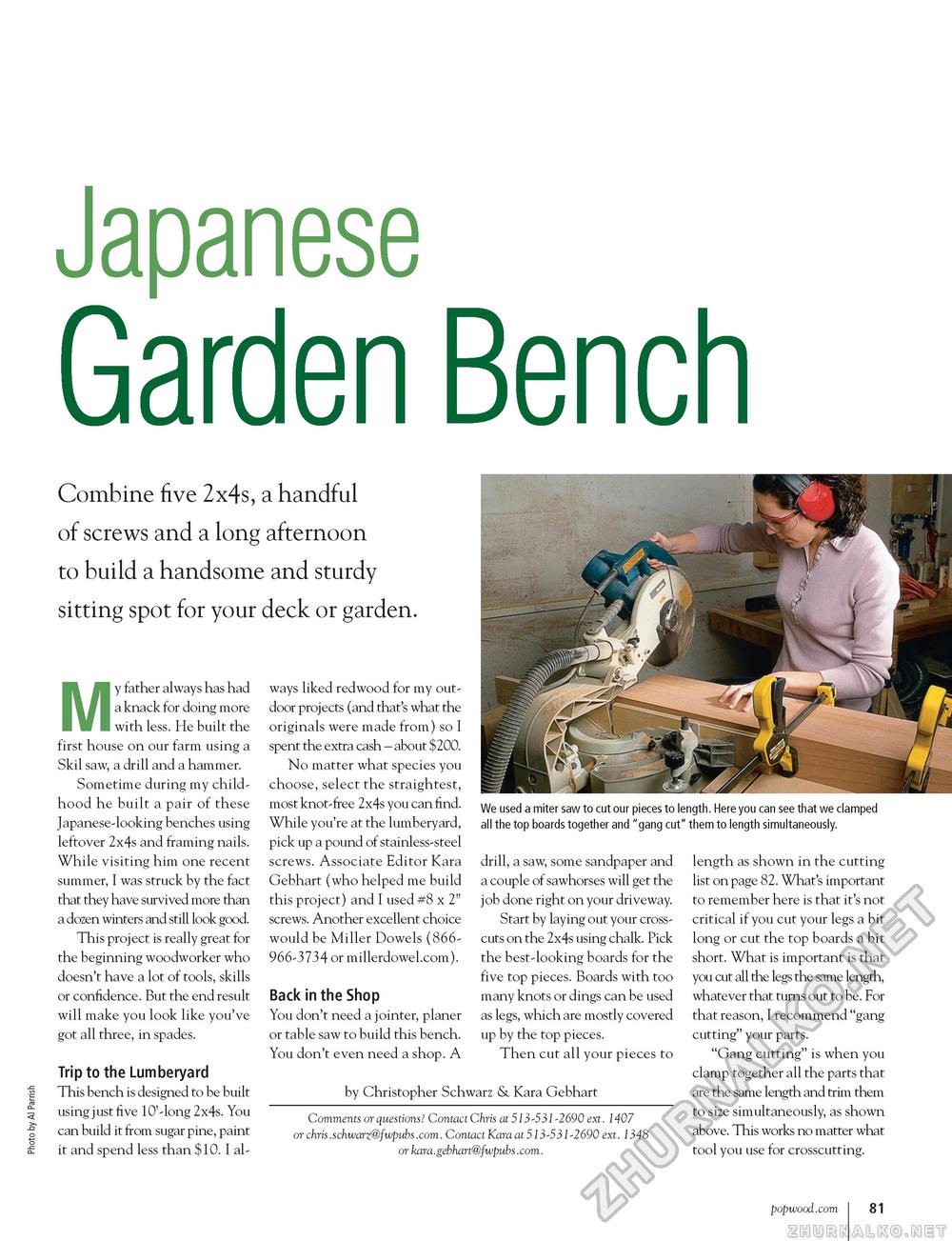Popular Woodworking 2004-04 № 140, страница 83
Japanese Garden BenchCombine five 2x4s, a handful of screws and a long afternoon to build a handsome and sturdy sitting spot for your deck or garden. M y father always has had a knack for doing more with less. He built the first house on our farm using a Skil saw, a drill and a hammer. Sometime during my childhood he built a pair of these Japanese-looking benches using leftover 2x4s and framing nails. While visiting him one recent summer, I was struck by the fact that they have survived more than a dozen winters and still look good. This project is really great for the beginning woodworker who doesn't have a lot of tools, skills or confidence. But the end result will make you look like you've got all three, in spades. Trip to the Lumberyard This bench is designed to be built using just five 10'-long 2x4s. You can build it from sugar pine, paint it and spend less than $10. I al ways liked redwood for my outdoor projects (and that's what the originals were made from) so I spent the extra cash - about $200. No matter what species you choose, select the straightest, most knot-free 2x4s you can find. While you're at the lumberyard, pick up a pound of stainless-steel screws. Associate Editor Kara Gebhart (who helped me build this project) and I used #8 x 2" screws. Another excellent choice would be Miller Dowels (866966-3734 or millerdowel.com). Back in the Shop You don't need a jointer, planer or table saw to build this bench. You don't even need a shop. A We used a miter saw to cut our pieces to length. Here you can see that we clamped all the top boards together and "gang cut" them to length simultaneously. drill, a saw, some sandpaper and a couple of sawhorses will get the job done right on your driveway. Start by laying out your crosscuts on the 2x4s using chalk. Pick the best-looking boards for the five top pieces. Boards with too many knots or dings can be used as legs, which are mostly covered up by the top pieces. Then cut all your pieces to by Christopher Schwarz & Kara Gebhart Comments or questions? Contact Chris at 513-531-2690 ext. 1407 or chris.schwarz@fwpubs.com. Contact Kara at 513-531-2690 ext. 1348 or kara.gebhart@fwpubs.com. length as shown in the cutting list on page 82. What's important to remember here is that it's not critical if you cut your legs a bit long or cut the top boards a bit short. What is important is that you cut all the legs the same length, whatever that turns out to be. For that reason, I recommend "gang cutting" your parts. "Gang cutting" is when you clamp together all the parts that are the same length and trim them to size simultaneously, as shown above. This works no matter what tool you use for crosscutting. popwood.com 81 |








